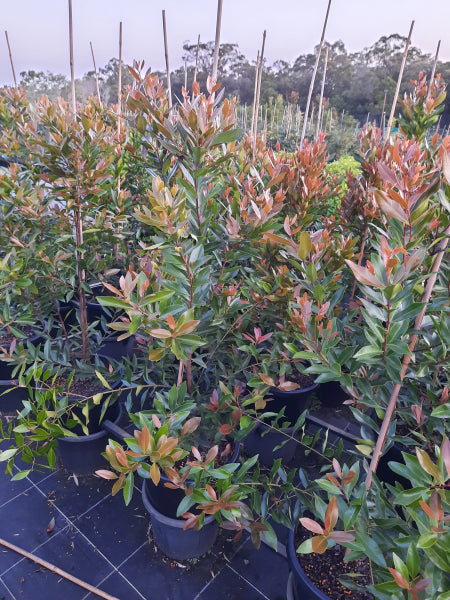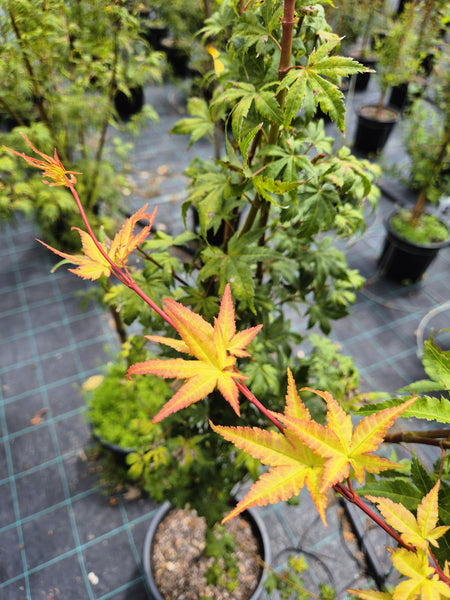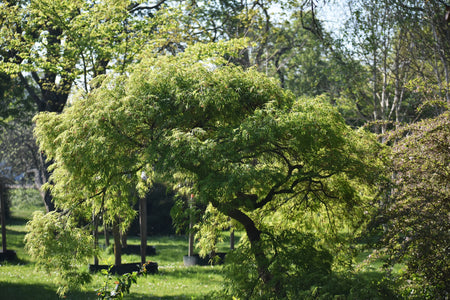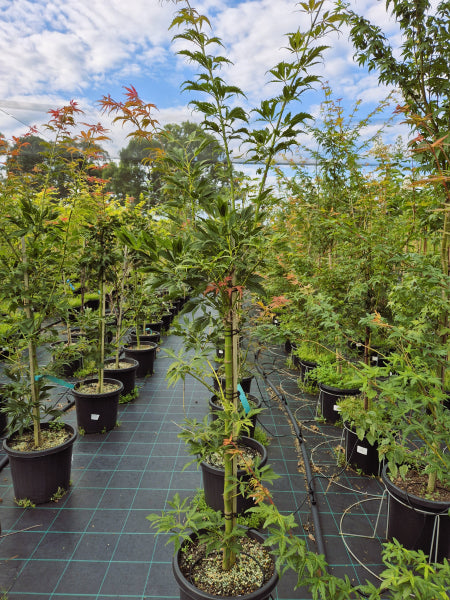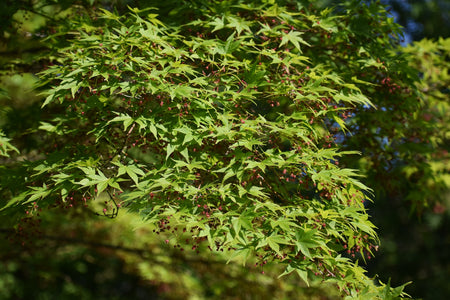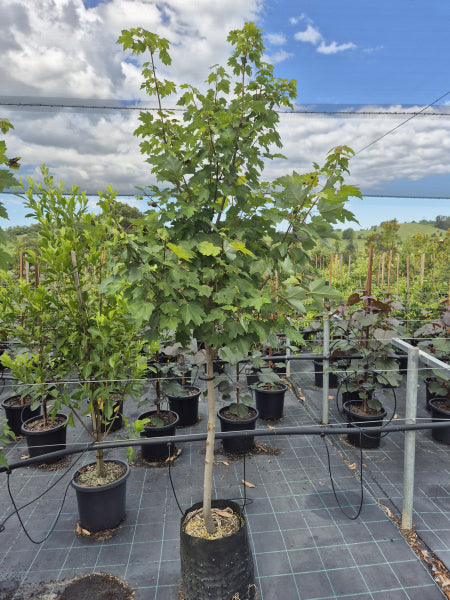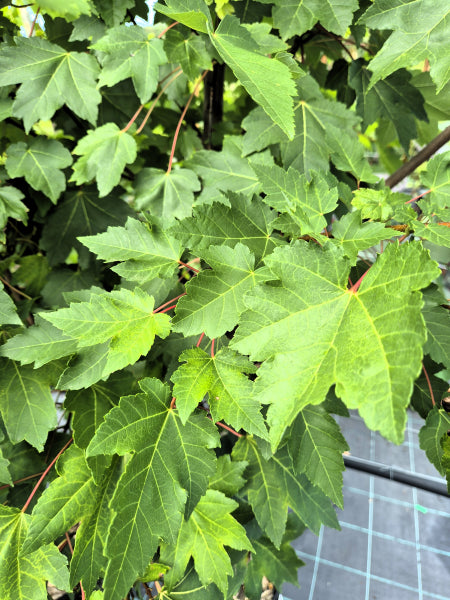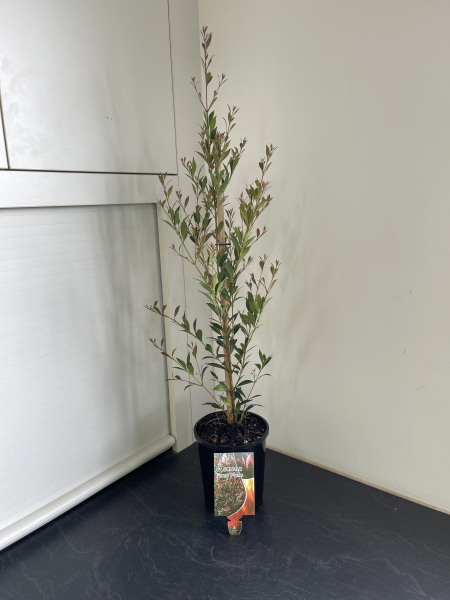Acmena hemilampra - Blush satin ash / Broad-leaved lilly pilly / Syzygium hemilamprum
- Mature size: 8-10m tall x 3m wide.
- Recommended spacing for hedging: 1.2m-1.5m apart.
- Ideal growing conditions: Full sun-part shade.
- Growth rate: Moderate-fast.
Uses
Native garden, feature tree, street or shade tree, hedge, informal privacy screen, coastal gardens, bank/creek areas.
Noteworthy
Australian Native, hardy evergreen, low maintenance, attracts birds and other pollinators.
Tolerant
Pruning/hard cut-backs, coastal conditions, wind, light frost once established, adaptable to a wide range of soil types.
Colour/Growth form
Dense green leaves, new foliage can be reddish-orange/yellow, cream coloured flowers followed by small round white fruit/berries. Medium-large shrub/tree.
What is Acmena Hemilampra?
Acmena hemilampra, commonly known as blush satinash or broad-leaved lilly pilly, is a medium-sized native tree found in Australia’s subtropical rainforests. Valued for its glossy green foliage and dense growth, it’s an excellent choice for use as a privacy screen, hedge, or feature tree. This hardy native thrives in coastal areas and along creek banks. It attracts birds and pollinators with its cream-coloured flowers followed by white berries.
How to Care for Acmena Hemilampra (Broad Leaved Lilly Pilly)
Caring for Acmena hemilampra involves providing well-drained soil and ensuring it receives regular watering. This relatively low maintenance plant flourishes in both partial shade and full sun, making it versatile for various garden settings. To promote healthy new growth, apply a slow release fertiliser during the warmer seasons.
Ideal Growing Conditions
Acmena hemilampra prefers moist well-drained soil, and can adapt well to various soil types including sandy soils. A position in full sun or part shade will encourage lush growth.
Benefits of Planting Acmena Hemilampra
Planting Acmena hemilampra contributes to biodiversity by providing habitats for local wildlife. Its lush appearance and glossy leaves make it a striking feature tree in any landscape. By adding this species to your garden, you enhance the natural habitat and promote the health of local ecosystems.

